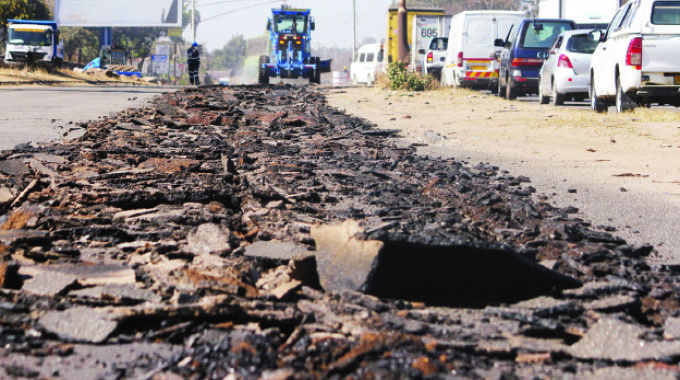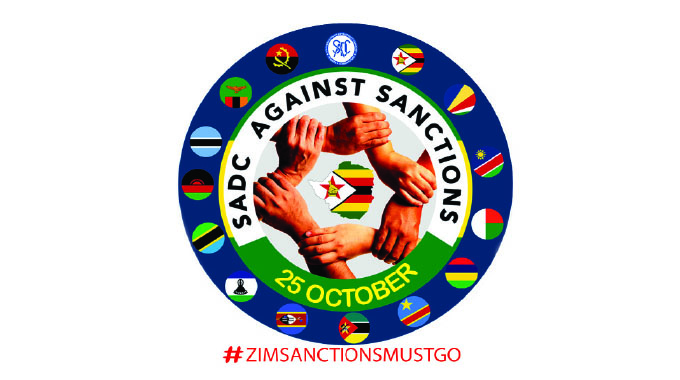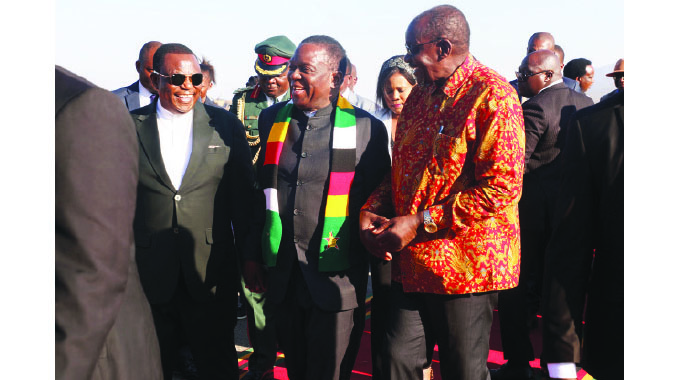President briefs summit on vaccination roll-out

Darlington Musarurwa recently in LILONGWE, Malawi
Zimbabwe has recorded pleasing results after accelerating its vaccine roll-out programme by acquiring 12,5 million doses and roping in additional medical personnel to increase convenience for the public, President Mnangagwa has said.
Speaking at the just-ended 41st Summit of SADC Heads of State and Government, the President said Government’s multi-pronged approach would help the country attain herd immunity.
“Zimbabwe has accelerated the Covid-19 vaccine roll-out programme with pleasing results and increased vaccine demand. To date, Government has sourced and purchased 12,5 million doses of vaccines. To widen vaccine administration, increase vaccine access and improve convenience to the inoculating public, my Government made a deliberate decision to allow private sector participation in the process to complement public health institutions,” said President Mnangagwa.
“The vaccine doses remain free of charge for all citizens. Additional dedicated staff at vaccination centres have been engaged to ensure that the provision of other health services is not compromised. These include retired medical personnel and other stakeholders such as pharmacists, among others.”
He said SADC countries needed to build greater self-reliance in financing productive capacities in industries and priority development projects, as relying on external suppliers of goods and services was untenable.
The Covid-19 pandemic, he said, had “put to test the resilience of our socio-economic structure and political structure and exposed weaknesses in productive capacities”.
He added: “The tendency to rely more on external suppliers for critical goods and services gives precedence to the call to develop and strengthen internal capacities and supply chains within our respective countries and indeed within our region.
“Increased investment in innovation, research, development, towards enhancing our capacities in the scientific research, technology, mathematics and engineering fields is integral.”
Government believes there is need to heighten synergies, collaboration and partnerships through leveraging on expertise that already exists in institutions of higher learning as well as in private and public sector entities.
The President said the theme that was adopted for the Summit, “Bolstering Productive Capacities in the Face of the Covid-19 Pandemic for Inclusive, Sustainable, Economic and Industrial Tranformation”, was timely as it gives impetus to the implementation of the SADC Industrialisation Strategy and Roadmap (2015-2063), as well as the new Regional Indicative Strategic Development Plan (2020-2030).
The two blueprints are envisaged to drive the regional bloc towards peace and prosperity.
“To remain on track for the achievement of our development objectives, it is critical that we double our efforts in resource mobilisation and to also build greater self-reliance in the financing of productive capacities our industries and priority development projects.
“The changing dynamics of the global development cooperation and the fact that international cooperating partners were just as severely affected by the Covid-19 pandemic and will no doubt affect our access to funds from traditional sources. Summit already took a decision to establish the Regional Development Fund. A progress report on the matter should thus be submitted to Summit at the earliest opportunity,” he said.
President Mnangagwa also congratulated Zambia for successful elections held last week, through which Hakainde Hichilema was elected as President.
Malawian President Dr Lazarus Chakwera, who is also SADC chair, described the just-ended Summit as constructive and progressive in advancing shared goals towards regional integration and economic cooperation.
He said regional countries needed to redouble efforts to achieve set targets of a stable, prosperous and highly industrialised region.
“Now is the time for us as a region to rebuild and recapacitate our productive resources. Now is the time for us to fully unleash our peoples’ entrepreneurial capabilities. Now is the time for us to set up production linkages for achieving structural and industrial transformation. Now is the time for us to turn the SADC we want into the SADC we enjoy,” said President Chakwera.
“Clearly, the kind of socio-economic transformation we envision cannot be achieved without industrialisation. Diversification from raw and unprocessed materials to value added and manufactured products is a must, and the SADC Industrialisation Strategy and Roadmap is key to making this a reality.”









Comments